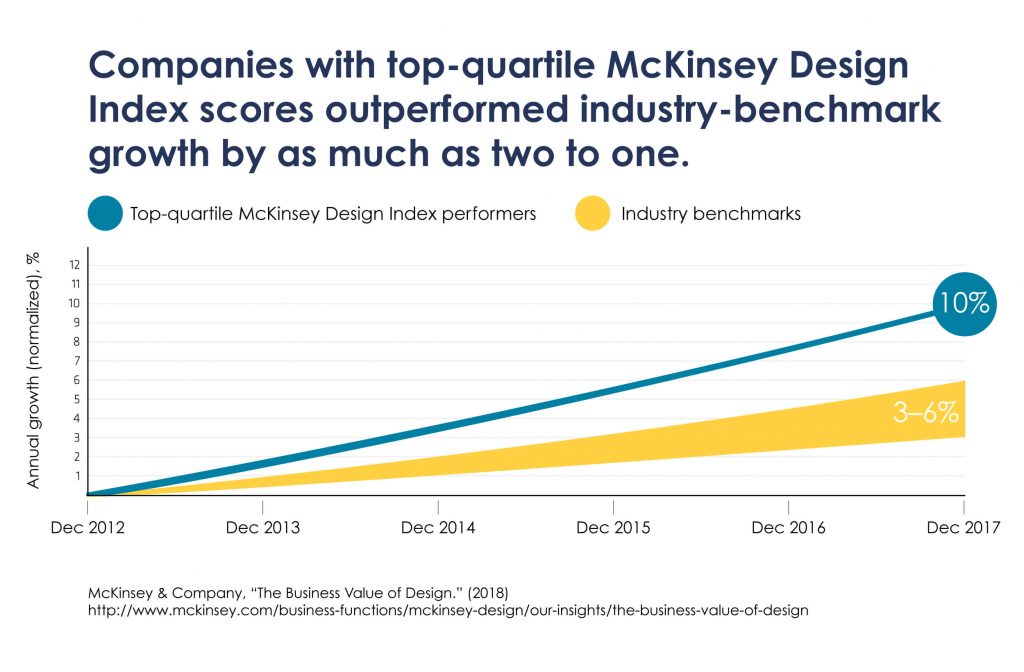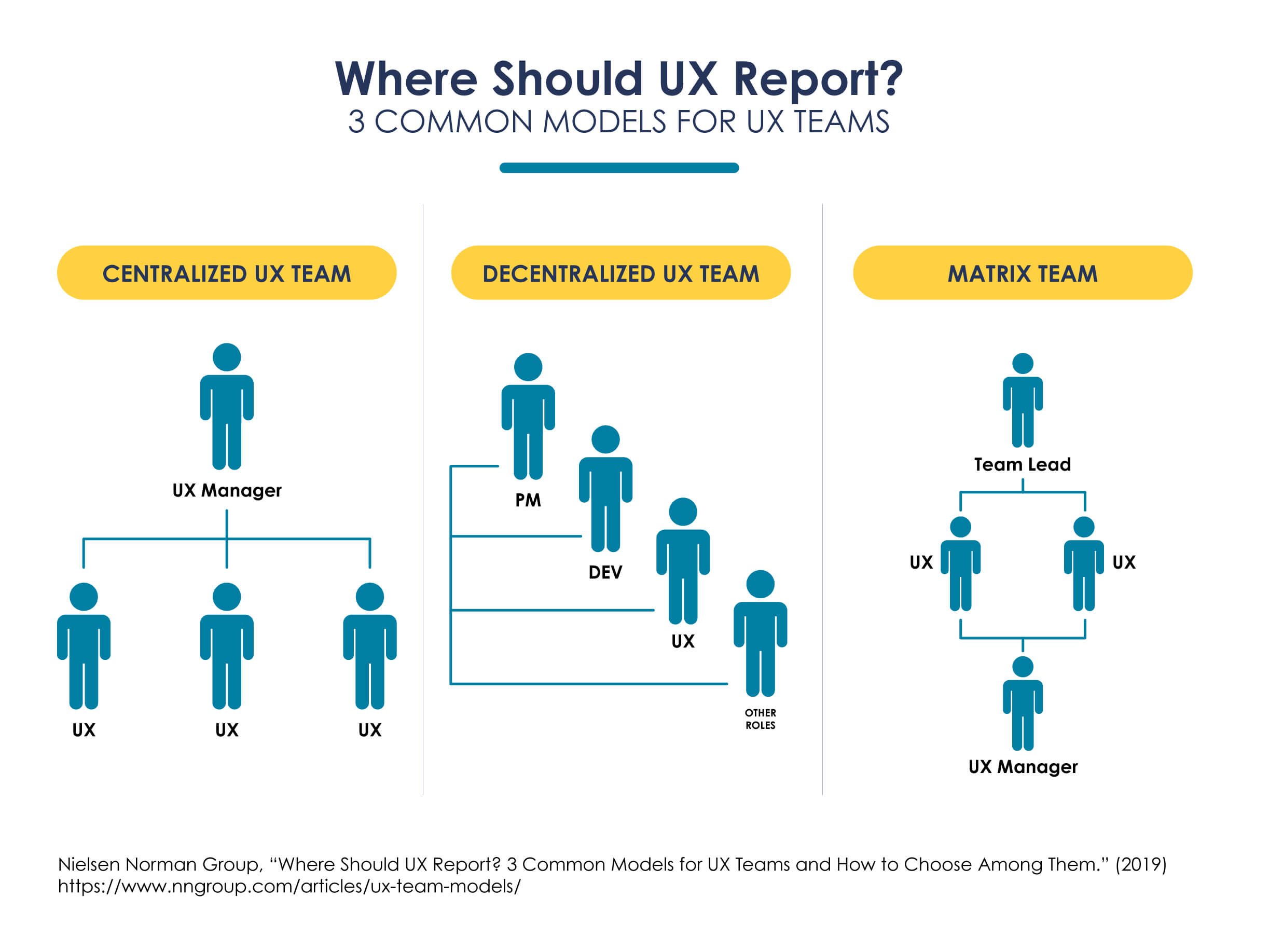What Is a UX Researcher & What Do They Do?

You may already be familiar with user experience (UX), a growing field that focuses on how human beings navigate interactions with everyday products and services. But what is a UX researcher? And what do UX researchers do?
UX research works to achieve good UX by systematically investigating clients’ experiences and figuring out how businesses can tailor their products and services to encourage optimal user reactions.
UX research isn’t some superfluous outgrowth of the marketing and design team, either — it can literally make, break, or shape a final product.
“Whether you are launching a brand new product or redesigning an existing one, it is essential to engage with real users before you do anything else,” UX researcher Emily Stevens once told Usability Geek. “If you skip this crucial step and dive straight into design and production, you are essentially basing your decisions on guesswork — a costly game to play.”
What kinds of consequences do companies incur when they skimp on UX research? Well, given that Fuel Cycle estimates that creating an MVP (minimum viable product) can cost between $30,000 to $50,000 on average, businesses who skip over UX research may be flushing tens of thousands of dollars down the drain.
There’s no question UX research is crucial to businesses. But what exactly do UX researchers do?
What Does a UX Researcher Do?
Though the word researcher might throw you off, UX research is far from a purely theoretical discipline; it requires a professional to draw upon diverse sets of design tools, methodologies, and real-life client concerns to improve a product.
On a standard day, a UX researcher works to gather detailed information from users through both qualitative and quantitative means. Interviews, diary studies, and usability testing are all used to collect and evaluate data systematically.
“There’s a lot more to user experience research than just stamping updates as ‘usable,’” industry professional Caitria O’Neill commented for the UX Collective. “The user experience researcher’s role, above all, is to act as the voice of the user — advising the design, checking impact with data, and helping your users achieve their goals.”
Through investigating the user, the UX researcher aligns their offering to the client’s goals, expectations, and requirements. The ultimate goal of a UX researcher is to deliver the most successful product at a minimal cost, but they also help to reduce the chance that developers, designers, and engineers incur costly implementation errors. More senior members of a company’s UX team will also seek a holistic understanding of the user and product as a means to define future opportunities for attracting consumer interest.
This is, in large part, why UX researchers are becoming an increasingly vital component of modern corporate success stories. The core fields of visual design, information architecture, and interactive design fall squarely under the jurisprudence of UX research and constitute the critical ways companies communicate with potential clients.
Studies show that there is a strong positive correlation between good design and business performance. According to a 2018 McKinsey report on the business value of good design, companies with top-quartile McKinsey Design Index scores outperformed industry benchmark growth by nearly two-to-one. Over five years, these top performers netted a 32 percent higher revenue growth and 56 percent higher total returns to shareholders than those with average design metrics.

These findings were consistent across all three fields reviewed: medical tech, consumer goods, and retail banking. This data indicates that good design practices are crucial to company success regardless of the product or service offered.
“Despite the obvious commercial benefits of designing great products and services, consistently realizing this goal is notoriously hard — and getting harder,” writers for McKinsey concluded in the report.
“Only the very best designs now stand out from the crowd, given the rapid rise in consumer expectations driven by the likes of Amazon; instant access to global information and reviews; and the blurring of lines between hardware, software, and services. Companies need stronger design capabilities than ever before.”
Given this, UX researchers are understandably in high demand. But where exactly do these professionals stand in the corporate structure, and how do they contribute to the product development process? Let’s address.
Where Do They Fit Into a Company?
While UX researchers are vital components of the product development pipeline, they don’t necessarily fit into a one-size-fits-all departmental structure.
Depending on a business’s organizational needs, a UX team will typically fall into one of three broad categories: centralized, decentralized, and matrix. Since companies choose their model preference based on their current priorities, that decision may change to accommodate shifting priorities or goals.

Centralized
In a centralized UX team, all team members report to a senior UX manager. Under this system, a project lead introduces a new product to the UX manager, who then communicates with the rest of their team.
The manager will assign tasks to teammates according to their specialty, availability, and time allotted. UX associates may be tasked with interdepartmental communication, such as discussing strategy or reviewing findings with developers, engineers, or marketing.
Centralized teams benefit from being well-established and highly organized. Since the UX department is an entrenched part of a company’s structure, the UX manager can vie for increased provisions and broader oversight.
That said, centralized teams may inadvertently be treated as isolated units and kept out of the loop of developers’ efforts on upcoming projects. Product teams and UX professionals may lack shared ideas about the trajectory of a project, especially if the team’s staff haven’t gained a deeper understanding of the end product.
Decentralized
On the other end of the spectrum, decentralized teams have no core manager to divvy up responsibilities. Instead, UX researchers are embedded throughout the organization in distinct product teams. Rather than reporting to a UX manager, these UX staff members report to a project manager and work directly with developers, marketers, and engineers.
The benefits of the decentralized model are clear: UX staff build trust throughout every department in the company, become experts of the product they’re working on, and are a vital part of product development.
However, it can be difficult for UX staff to coordinate with each other and advocate their points to senior product developers without their team members’ backing. Product managers may also provide too little time for design and research if they don’t understand the importance of UX research.
Matrix
Matrix teams provide a hybrid of the decentralized and centralized team structures, allowing dispersed UX staff to communicate with a centralized UX manager. While product managers provide day-to-day direction, the UX manager executes oversight to align company-wide product execution with unified user experience methodologies.
Matrix teams have a high degree of flexibility and partner well with different departments throughout the corporate structure. The involvement of product managers and a UX manager increases the likelihood of the UX staff’s overall success.
On the other hand, matrix teams can also be notoriously difficult to organize. What is a UX researcher to do when a problem occurs? Do they report to the product manager or the UX manager? UX staff may be unclear which authority figure to follow, especially if opinions differ between senior developers and designers.
Of course, not all companies will be big enough to necessitate a multi-person UX research team. If a business only needs a single UX professional, that person will need to carve out their place in the company’s workflow independently.
Techniques UX Researchers Use Every Day
Now that we’ve boiled down how UX researchers fit into companies, it’s time to dive into the skills they need on the job.
UX & Design Thinking
Design thinking is a broad framework that researchers employ to tackle vast, abstract, or untracked territory in product development. It’s a holistic, empathetic discipline focused on user feedback to prototype new ideas. Modern design thinking methodology heavily draws from the Hasso-Plattner Institute of Design at Stanford.
When problem-solving via this framework, UX staff members start their consideration by asking certain questions:
- What are our users’ wants and needs?
- What problems do they encounter in daily life?
- How can we offer solutions in an accessible, intuitive way?
After defining the problem, UX staff brainstorm potential solutions and build low-fidelity (i.e., basic but functional) prototypes. The team will then ask a pool of users to test the platform and begin the cycle anew for solving smaller sub-problems.
Decision Mapping
Decision mapping is a reliable method for developing effective, cost-efficient research plans. During every phase of research, the UX staff caters to the needs defined by stakeholders, other departments, and end-users.
The first step is for UX staff to define the problem they are trying to solve through research.
Common questions include:
- Why should we build this product?
- Can we remove a problematic feature without negative repercussions?
- Which features does this product need to have?
The staff then outlines vital questions, hypotheses, and underlying assumptions. After determining what data can be generated through user research, the researchers draft test exercises to best conduct testing.
UX Interviewing
UX interviews are one-on-one sessions where a researcher poses questions to a user about their experience with a product or service. The researcher endeavors to collect data that will enrich the UX team’s contextual understanding of the user’s wants, needs, and requirements.
Interviews can be performed before a product is designed or at the end of a usability test to assess user interactions with the product and address any issues during production.
Prototyping
Prototyping is an early version of an idea that can be used to make a fully-fledged product suitable for sale. Sketches, mockups, and drafts are all different forms of prototyping.
UX professionals rely on the prototyping process to understand how a product works, solve problems before the development phase, and improve user experience.
InVision
InVision is one of the most popular prototyping tools used by UX designers and researchers alike.
This comprehensive software allows design professionals to build high-fidelity, functional prototypes from static, non-responsive images without the expense and time required for formal development. With it, UX researchers can view and assess prospective mobile and desktop applications in minutes.
HTML & CSS
HTML and CSS are two front end coding languages that form the backbone of the web’s visual landscape. With HTML, UX researchers can define a website’s structure, such as where paragraphs, images, and headers might arrange themselves on a page. CSS, or Cascading Style Sheets, applies styling to HTML objects, thereby defining qualities such as color, size, and object positioning.
How Do You Learn the Necessary Skills?
What do UX researchers do to achieve their foundational skills?
There are many pathways one can take to thrive as a UX researcher. Unlike many other technical disciplines, there aren’t all that many formal undergraduate programs that focus specifically on UX research and design.
That said, master’s programs are available to those who already have their bachelor’s degree in a related field. Unlike other professionals, UX master’s degrees don’t necessarily require any previous UX or technical experience (although having applicable skills certainly does help).
But, as UX researcher Carrie Boyd recently stated for User Interview, “There isn’t really one set way to get into UXR. You can find your way to a career in research through academia, design, product, writing — the possibilities are honestly endless.”
UX professionals are a diverse crew. Those hailing from social science, humanistic, or art backgrounds often thrive in the field as capably as any tech professional. In fact, given the overlap in research skills, those in academic positions can transition well into UX research, given a little additional training and support.
Such training is readily available via UX boot camps, which offer hands-on instruction on practical skills. Boot camps are known for being affordable and can leave aspiring UX researchers with necessary industry skills in as little as three to six months.
If you’re interested, make sure to consider your educational opportunities before committing to any one program. Programs that offer variations of online or self-directed study may work best for you depending on your personal needs, situation, and available resources.
Is UX Research a Worthwhile Field?
The short answer? Yes!
UX research is a growing field that companies have begun to value in earnest. In the digital age, businesses have to be conscious of how their products inspire (or prevent) desired consumer behaviors. Customer retention, conversion, and outreach are fundamental to company success — and are UX researchers’ professional bread and butter.
Are you interested in learning more about what UX researchers do? Review your local education providers to see if they offer the courses you’ll need to build your skill set and break into this high-potential profession.

 Live Chat
Live Chat